Types of Semi-Trailer Axles
Semi-trailer axles come in various configurations, each designed for specific applications and load capacities. Understanding these differences is crucial for selecting the right axle for your needs.
Single Axle
Configuration: Two wheels on each side connected by one axle rod
Benefits: Enhanced maneuverability, lighter weight, lower cost
Limitations: Lower weight capacity, reduced stability on uneven surfaces
Best for: Small trailers, utility trailers, horse trailers, and applications where weight is not a primary concern
Tandem Axle
Configuration: Two closely positioned axles with four wheels on each side
Benefits: Improved weight distribution, greater stability, higher load capacity
Limitations: Higher cost, more complex maintenance
Best for: Freight transportation, long-distance travel, medium-weight cargo hauling
Tridem Axle
Configuration: Three closely positioned axles with six wheels on each side
Benefits: Maximum stability, highest load-bearing capacity, optimal weight distribution
Limitations: Increased cost, complex maintenance, greater weight
Best for: Heavy-duty applications, bulk material transport (steel, timber), oversized cargo
Boogie Axle
Configuration: Multiple axles mounted on the same frame section
Benefits: Enhanced load distribution, improved traction, better stability
Limitations: Specialized application, more complex design
Best for: Large trucks and specialized trailers requiring exceptional stability and traction
Specifications and Technical Details
Semi-trailer axles come with various specifications that determine their performance, durability, and suitability for different applications. Understanding these specifications is essential when selecting or replacing axles.
| Specification | Range/Options | Importance |
|---|---|---|
| Axle Capacity | 1,000 - 13,000 kg | Critical safety factor that determines maximum load capability |
| Number of Axles | 1-3 (Single, Tandem, Tridem) | Affects handling, braking performance, and load distribution |
| Axle Design | Beam, Independent Suspension | Impacts durability, maintenance requirements, and ride quality |
| Wheel Size | 22.5" - 24" | Determines ground clearance and overall trailer height |
| Brake Type | Air Brakes, Hydraulic, Electric | Critical for stopping power and safety, especially with heavy loads |
| Material | Steel, Aluminum | Affects weight, durability, and corrosion resistance |
Maintenance Best Practices
Proper maintenance is essential to maximize the lifespan of semi-trailer axles and ensure safe operation. Following these maintenance procedures will help prevent premature wear and costly failures.
Regular Inspection
Conduct thorough visual inspections looking for cracks, damage, or excessive wear. Pay special attention to wheels, bearings, and brake components. Document findings and address issues promptly.
Frequency: Before and after long hauls, weekly for regular use
Proper Lubrication
Keep all moving parts well-lubricated using manufacturer-recommended lubricants. Focus on bearings, suspension components, and any sliding surfaces. Clean components before applying fresh lubricant.
Frequency: Monthly or every 10,000 miles, whichever comes first
Tire Maintenance
Maintain proper tire inflation according to manufacturer specifications. Check tread depth regularly and ensure even wear patterns. Rotate tires according to recommended schedules.
Frequency: Pressure checks weekly, tread inspection monthly
Load Distribution
Ensure proper load distribution across all axles. Position heavier items closer to the axles rather than at the extreme ends of the trailer. Avoid exceeding maximum axle ratings even with proper distribution.
Best practice: Use weight distribution tools and load calculators when planning cargo placement
How to Choose Semi-Trailer Axles
Selecting the right semi-trailer axle is crucial for operational efficiency, safety, and longevity. Consider these key factors when making your decision:
Load Capacity
Choose an axle with a Gross Axle Weight Rating (GAWR) that exceeds your maximum expected load by at least 15-20%. This safety margin ensures the axle won't be stressed beyond its design limits even under challenging conditions.
Axle Configuration
Select between single, tandem, or tridem configurations based on your typical cargo weight and distribution needs. For loads exceeding 10,000 kg, multiple axle configurations are typically necessary.
Wheel Size Compatibility
Ensure the axle's wheel size matches your trailer's design specifications and wheel wells. Consider how wheel size affects ground clearance, especially for applications involving rough terrain or loading docks.
Braking System
Select an axle with an appropriate braking system for your trailer's weight and intended use. Air brakes provide superior stopping power for heavy loads, while electric brakes may be suitable for lighter applications.
Suspension System
Consider the suspension system that best suits your operational needs. Leaf spring suspensions offer simplicity and durability, while air suspensions provide better ride quality and load adjustability.
Material Considerations
Choose between steel (stronger, more durable) and aluminum (lighter, corrosion-resistant) based on your priorities regarding weight, longevity, and operating conditions.
Manufacturer Reputation
Select axles from reputable manufacturers with proven track records. Quality products typically offer better warranties, parts availability, and technical support.
DIY Semi-Trailer Axle Replacement Guide
Replacing a semi-trailer axle can be done as a DIY project with proper preparation and tools. Always consult the manufacturer's service manual for model-specific instructions before beginning.
Preparation
Gather tools and parts
Positioning
Secure trailer on level ground
Disassembly
Remove wheels and components
Replacement
Install new axle
Final Check
Verify installation
Step 1: Tool Preparation
Gather all necessary tools: jacks, jack stands, wrenches (various sizes), torque wrench, hammer, penetrating oil, safety equipment, and the correct replacement axle.
Step 2: Position the Trailer
Park the trailer on a flat, level surface away from traffic. Engage parking brakes and chock wheels that will remain on the ground during the procedure.
Step 3: Inspect and Document
Examine the wheel end configuration and take photos for reference. Note any unique brake or wheel-end accessories before disassembly.
Step 4: Remove Wheels
Loosen lug nuts while the trailer is still on the ground, then raise with a jack and remove the wheels completely.
Step 5: Disconnect Components
Following the service manual, disconnect brake components, brake lines, and any sensors or ABS wiring from the axle.
Step 6: Support and Release Axle
Support the axle with a floor jack, then remove U-bolts, hangers, and mounting hardware that secure the axle to the suspension.
Step 7: Remove Old Axle
Carefully lower the jack to remove the old axle. Clean the mounting surfaces where the new axle will be installed.
Step 8: Install New Axle
Position the new axle and raise it into place. Ensure proper alignment before securing with mounting hardware.
Step 9: Reconnect Components
Reconnect all brake components, lines, and wiring. Ensure proper routing and secure connections.
Step 10: Final Check and Test
Reinstall wheels, torque lug nuts to specification, remove jack stands, and perform a thorough inspection before road testing.
Frequently Asked Questions
A single axle has one axle with two wheels on each side, providing basic support for smaller trailers. A tandem axle features two axle sets (four wheels on each side), offering better weight distribution, increased stability, and higher load capacity. Tandem axles are preferred for heavier loads and longer distances due to their superior performance and reduced road stress.
Yes, semi-trailer axles can be upgraded for heavy-duty applications. This typically involves replacing standard axles with those having higher load ratings, stronger materials, and enhanced design features. When upgrading, it's essential to ensure compatibility with the existing suspension system and frame structure. Professional consultation is recommended to determine the appropriate upgrade path based on specific operational requirements.
Yes, specialized off-road semi-trailer axles exist for challenging terrain applications. These axles feature enhanced ground clearance, reinforced construction, heavy-duty suspension components, and often specialized brake systems designed to withstand dust, mud, and vibration. Off-road axles are commonly used in logging, mining, construction, and agricultural operations where trailers must navigate unpaved surfaces and rough conditions.
Axle ratios significantly impact semi-trailer performance characteristics. Higher numerical ratios (e.g., 3.90:1) provide increased torque multiplication, making them ideal for heavy loads and hilly terrain but reducing top speed and fuel efficiency. Lower ratios (e.g., 3.31:1) optimize for highway speed and fuel economy but offer less pulling power. Selecting the appropriate ratio depends on primary operating conditions, typical load weights, and whether speed or power is the priority.
High-strength steel is the predominant material for semi-trailer axles due to its exceptional durability, load-bearing capacity, and cost-effectiveness. Various steel alloys are used depending on the application requirements. While aluminum axles exist and offer weight savings of up to 30% (improving fuel efficiency and increasing cargo capacity), they're less common due to higher costs and lower strength compared to steel. Some premium axles use composite materials for specific components to balance strength and weight.














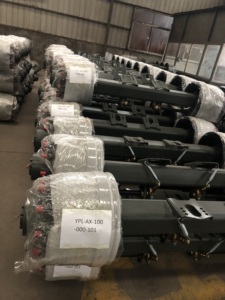





















































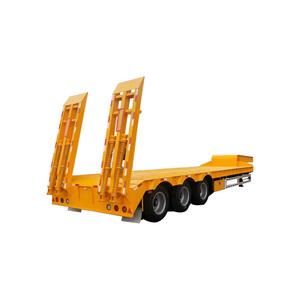











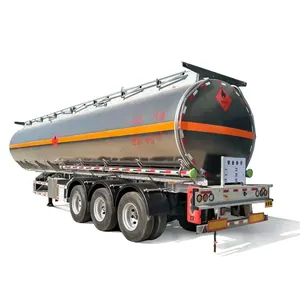
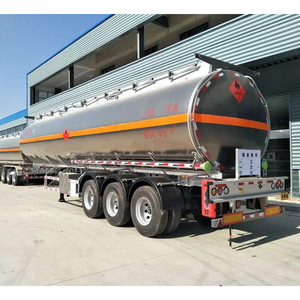





















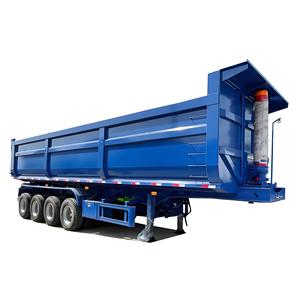































































































































































 浙公网安备 33010002000092号
浙公网安备 33010002000092号 浙B2-20120091-4
浙B2-20120091-4